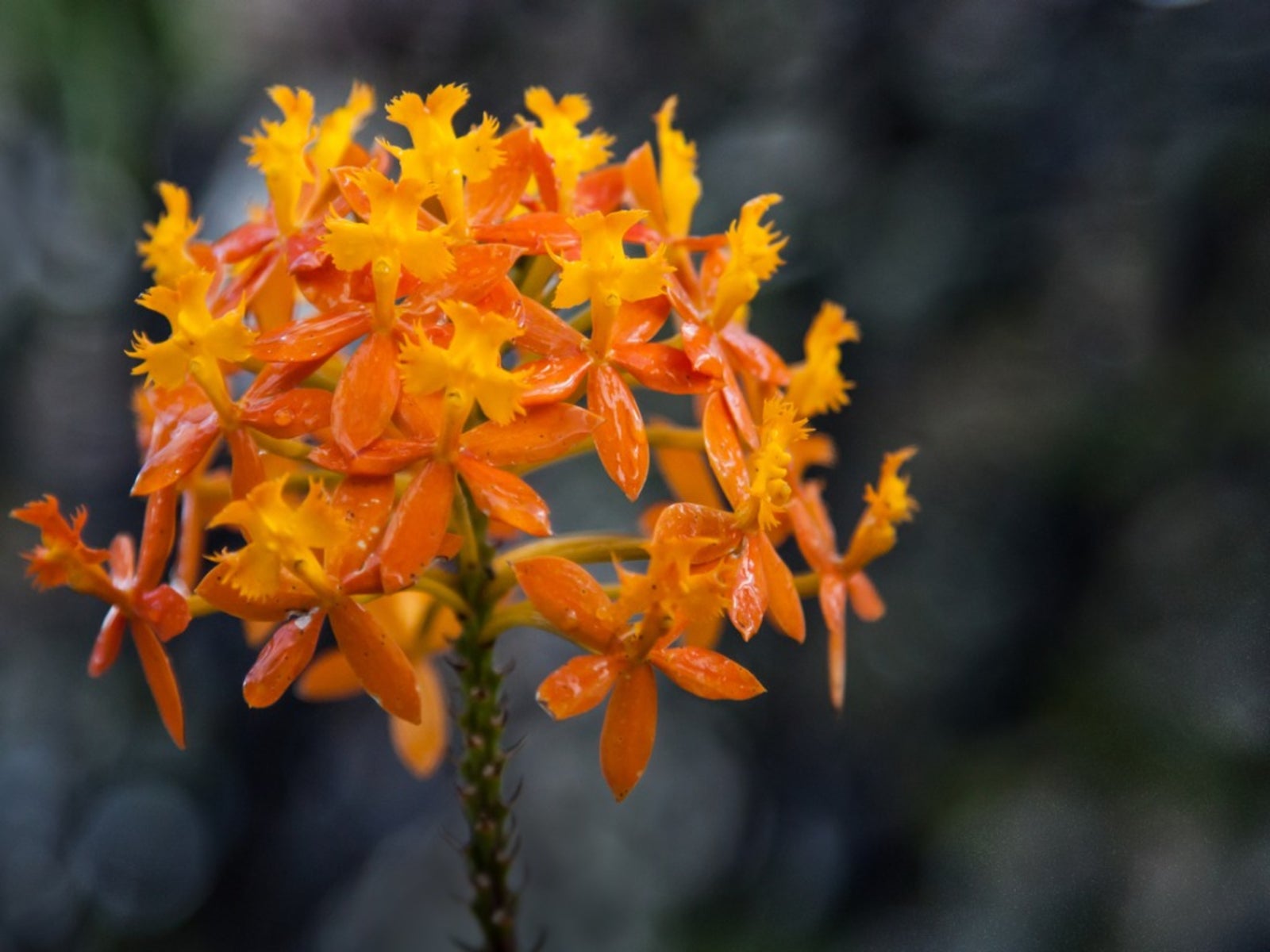About Epidendrum Orchid Plants: Information On Epidendrum Orchid Care


Epidendrum orchid plants are among the most common and the most unusual forms of the flowers. This group of orchids encompasses over 1,000 varieties of sub-tropical to tropical plants. That means most of them are not suited for long-term outdoor growing. Instead, they thrive in a greenhouse or even the home interior. Epidendrum orchid care is a labor of love and provides a unique hobby for the orchid enthusiast. The following is an overview of how to care for Epidendrums.
About Epidendrum Orchid
Most orchid care is the same, but just in case you don't have a clue which variety of orchid you have, here are some details on the Epidendrums. The majority of these plants are epiphytic and live suspended from a tree or cliff with minimal soil. A few are terrestrial but they also thrive on low-nutrient media. The forms of Epidendrums vary widely. Some produce pseudo bulbs while others have cane-like stems. The color and shape of the flower petals depend upon the cultivar, but most of the group has a characteristic three-lobed lip at the bottom of the flower that closes in on the center.
Growing Epidendrum Orchids
Epidendrum orchids are persistent and often bloom several times over the season. The plants are used to low nutrient sites and can live on just bark or grow in pots with the orchid medium. The plants are amazingly adapted to a variety of conditions. Warm interior conditions are the plant's preferred state, but they will tolerate temperatures down to 50 degrees F. (10 C.). A few collectors do not care much about Epidendrum orchids, feeling the flower is not spectacular in comparison to other species. They are tough little plants, however, and the scent from the blooms perfumes the home or greenhouse. Propagation is through tissue culture and is difficult to do at home. Conditions must be perfect and sterile in order to achieve a replica of the parent plant. Most novices who try growing Epidendrum orchids themselves get a hybrid mix instead of a true copy. Fortunately, the Epidendrum orchid plants are readily available.
How to Care for Epidendrums
Epidendrum orchid care is minimal. They are tough plants used to inhospitable conditions. Epidendrums cannot survive freezing conditions but do well in almost any temperature above 50 degrees F. (10 C.). While they prefer indirect bright light, they perform nicely in brighter to dimmer conditions. Cut off the spent flower stems and you will find the plant blooming again in about two months. Fertilize with orchid food every two weeks and water about once per week. Keep the plant moist but the surface of the bark media should not be soggy. Orchids like to be pot-bound, so re-potting is not terribly important. Do it once every three years or so in order to refresh the potting medium. Use an orchid mix and a pot just big enough to fit the coiled roots into. Several species can grow outdoors in Florida, but the majority of gardeners will need to situate them indoors. Once you find a space they love, don't move the plant. They seem to be very sedentary and proprietary once they have their chosen space. Moving the plant can cause a sudden decline in its health.
Sign up for the Gardening Know How newsletter today and receive a free copy of our e-book "How to Grow Delicious Tomatoes".

Bonnie Grant is a professional landscaper with a Certification in Urban Gardening. She has been gardening and writing for 15 years. A former professional chef, she has a passion for edible landscaping.